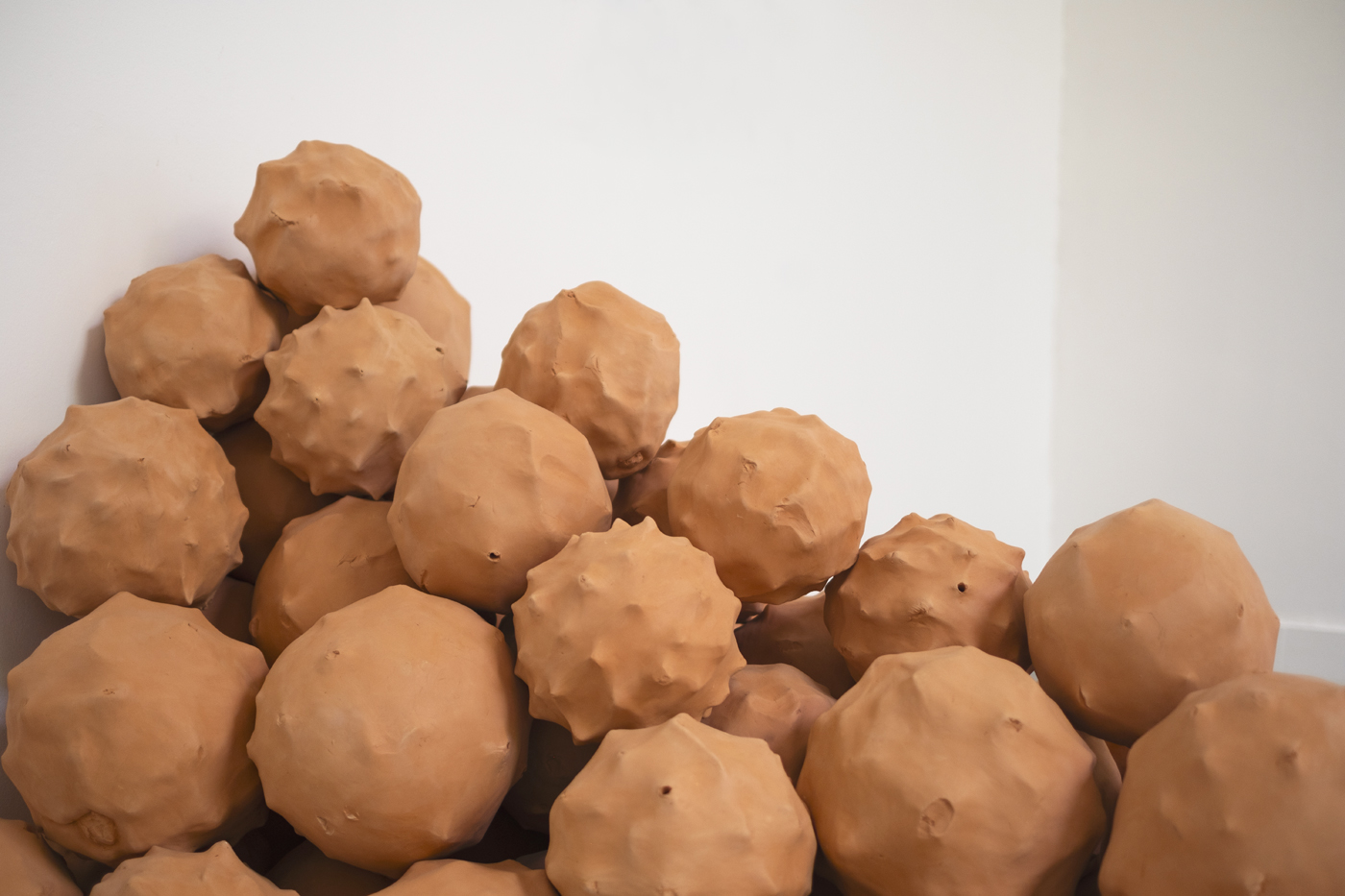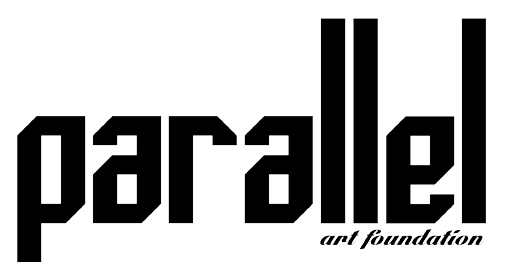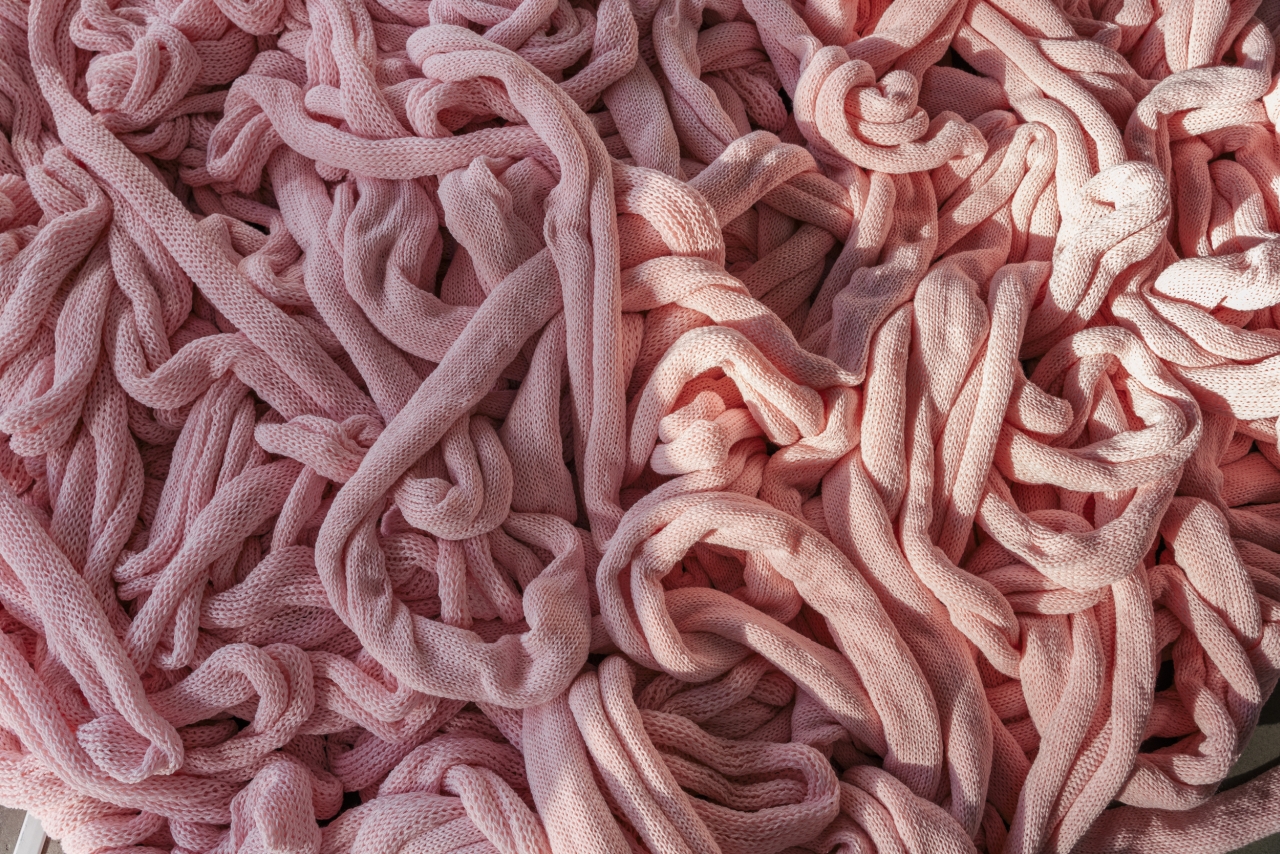
Ditta Sarfenstein
Inventory
Cairo Contemporary, Budapest
2025 11 21 - 2026 01 04
Sarfenstein Dittas' work deals with questions such as: Do our material possessions define us? Can our objects describe and characterize us? How do our objects influence each other, and how do we imbue our everyday objects with our own personalities?
The overlapping of colours and shapes results in an illusionistic spatial game, evoking a quasi-virtual composition in the emptied exhibition space. The process of creating the Inventory can be compared to the structure of memory: encoding, storage, retrieval. During the latter, the artist draws her objects in space with her pen.
Sarfenstein Ditta graduated in 2025 from the Hungarian University of Fine Arts with a degree in sculpture, where she studied in Ádám Szabó's class. During her studies, she researched ways of visually representing the contrast between virtual and real concepts using sculptural tools, and she also combines traditional craft techniques with modern tools. The technique she used to create his diploma project, Inventory, could be described as the culmination of these two areas of research: hand drawing in space with a 3D pen. In addition to Budapest, she studied fine arts in Munich, Groningen, and Antwerp.
///
On view 0-24h
Cairo Contemporary, 1071 Budapest, Lövölde tér 7.
Organised by Parallel Art Foundation
Curator: Gábor Pintér
Supported by Erzsébetváros Municipality, Hungarian Art Academny
Cooperation partner: Bischitz Johanna Integrated Human Service Centre
instagram.com/Cairo.Contemporary
instagram.com/parallel.art.foundation




Setényi Anna Eszter
Konyhai vita / Kitchen Debate
2025.12.05 – 2026.01.09.
PUCCS Contemporary Art
Megnyitó: 2025. december 5., 18:00-19:30
A kirakatinstalláció a The Kitchen Debate* (1959) történelmi eseményét értelmezi újra egy feminista nézőpontból, rávilágítva arra, hogyan vált a hidegháborús propaganda eszközévé a háztartás és a női szerepek idealizálása. A nézők saját testükkel és tekintetükkel válnak részesévé annak a hatalmi játszmának, amelyben a privát és a politikai tér elválaszthatatlanul összefonódik.
Setényi Anna Eszter a Magyar Képzőművészeti Egyetem látványtervező szakán végzett, jelenleg pedig festő szakos hallgató. Művei csoportos kiállításokon szerepeltek, többek között, a komáromi Limes Galériában és a Velencei-tavi Galériában. Művészeti praxisában a nők és a munka transzhisztorikus kapcsolatát kutatja, kifejezett figyelemmel annak szocialista és kapitalista pólusaira.
* A konyhai vita egy sor rögtönzött eszmecsere volt tolmácsok közreműködésével az amerikai alelnök (később amerikai elnök) Richard Nixon és a szovjet miniszterelnök Nyikita Hruscsov között, az Amerikai Nemzeti Kiállítás megnyitóján a moszkvai Sokolniki Parkban 1959. július 24-én. A kiállításra egy egész ház modelljét építették fel, amelyről az amerikai kiállítók azt állították, hogy az Egyesült Államokban ilyet bárki megengedhet magának. A ház tele volt a háztartáisi munkát megkönnyítő, valamint szabadidős eszközökkel, amelyek a kapitalista amerikai fogyasztói piacra szánt vívmányait hivatottak bemutatni.
///
Megtekinthető: 0-24h
PUCCS Contemporary Art, 1084 Budapest, Víg u. 22.
Szervezés: Parallel Művészeti Alapítvány
Kurátor: Pintér Gábor
A program Budapest Főváros VIII. kerület Józsefvárosi Önkormányzat és a Magyar Művészeti Akadémia támogatásával valósul meg.


![]()
Zsuzsanna G. Szabó
more is more
PUCCS Contemporary Art
2026.01.16-02.20.
The clothing industry produces, artists create – both processes generate endless amounts of by-products that are inherently wasteful, slowly flooding the world with objects.
Zsuzsanna G. Szabó has long been engaged in a deeper analysis of her main medium, knitting, in various contexts. Her installation presented at Puccs was inspired by the large amount of experimental knitting that inevitably accumulates in workshops during the creation of knitted objects. Contemplating the sculpture installation created from these objects, which fills the entire space, we can reflect on our already visually overstimulated world, the textile industry's environmentally damaging overproduction, chaos, and the beauty inherent in it.
Many knitting require a lot of time. The exhibited fabrics were all made on manually operated flat knitting machines, bearing the traces of the long, meditative, artisanal work that went into their creation, which gives them added meaning.
Zsuzsanna G. Szabó (Budapest, 1990) is a textile artist who graduated from the Moholy-Nagy University of Art and Design with a degree in fashion and textile design. In 2015 and 2016, she participated in theater director and visual artist Robert Wilson's summer residency program at the Watermill Center in New York, where she gained experience in costume design and performance art. She works in performance art, installations, and knitwear and costume design, primarily in the field of contemporary dance. Her main area of creation is costume-centered performance. The genre is unique in that the focus is on the shaped material, blurring and dissolving the boundaries between performing arts, visual arts, and applied arts. Her most important creative tool is knitting, but she also works with embroidery and other textile techniques, and she constantly examines and researches the cultural and social significance of these activities. She often reflects on her own life in her works, so her frequent themes are motherhood, femininity, and the ideas based on them.
///
On view 0-24h
PUCCS Contemporary Art, 1084 Budapest, Víg u. 22.
Organised by Parallel Art Foundation
Curator: Gábor Pintér
Supported by Budapest - District 8 Józsefváros Municipality and Hungarian Academy of Arts.



Kamilla Szeli
Remus
2025.11.07 – 30.
PUCCS Contemporary Art
Opening: 2025, Nov 7., 6-7.30pm
What is this place?
I see the source. It towers above me in its orange splendor. It looks familiar. It's as if I've drunk from it before. Breast milk?
Remus, wake up!
This is the new world.
Kamilla Szeli, with her works, creates the life of her own fictional soft planet, where the mysterious forms of underwater worlds, the alien aesthetics of extra-terrestrial life, and symbols of femininity intertwine. She brings her sculptures to life using traditional techniques of sewing, stuffing, and wool felting, inviting interaction with their softness and organic yet unfamiliar forms.
In her works, textile as a medium conveys the duality of fragility and flexibility. The volume achieved through stuffing reflects the changing shapes of the female body, while the wool felting reflects the ancient power of motherhood. Her sculptures are at once playful and unsettling, familiar and alien, just like the inhabitants of the mysterious planet she imagines.
When creating her works, the artist's main inspiration is to use visual language to tell stories about existence, transformation, and mysterious relationships. She invites the viewer to enter this world woven from fabric and imagination and discover the sometimes grotesque stories hidden behind the soft forms.
[Remus 2025, textile, wool, polyurethane foam, glass]
On view 0-24h
///
Supported by Budapest - District 8 Józsefváros Municipality and Hungarian Academy of Arts.
PUCCS Contemporary Art, 1084 Budapest, Víg u. 22.
Organised by Parallel Art Foundation
Curator: Gábor Pintér

Gergely Horváth
Breadman
2025 09 29 - 11 16
Cairo Contemporary
Gergely Horváth's installation entitled Inventory consists of elements shaped like terracotta galls, enlarged by a change of scale and placed in a warehouse setting. The gall is a powerful symbol for the artist. It simultaneously fulfills the role of a parasite and a life-giving cradle. He believes that this duality, whereby nothing is black and white, i.e. everything is grey, characterizes all areas of life. On the other hand, scouting played an important role in the artist's life for a long time, and the gall is an unavoidable symbol of this in Hungary. He made these forms out of terracotta, striving to choose a material that was as close to the earth as possible. He found clay to be the most suitable for this. The possibility of playful variations hidden in the modularity of the elements is also very inspiring for the artist.
The main starting point for Gergely Horváth's works is nature, through which he examines the relationship between nature and humans. He is concerned with human ecological issues such as how humans relate to nature in a given age and society, and what role it plays in our lives today. Fruits and plant motifs such as galls, trees, and thorns appear as recurring elements in his works, which are associated with both personal and symbolic layers of meaning. The perspective of the child self cannot be omitted from the creative process, which evokes the act of gathering and the experience of marveling at the world. The fruits found in nature are strange formations in themselves, with a diverse range of shapes, each unique and unrepeatable: he emphasizes this way of being in his unique sculptures, which are crafted manually using traditional woodcarving techniques. He most often works with hardwoods—walnut, acacia, or oak—which allow him to create delicate, detailed forms. In addition to other organic materials such as terracotta and living plants, his works are also made of cast metals and iron, because he believes that the contrast between the materials emphasizes the natural-artificial duality. In addition, he always strives to think in new ways about new media and to incorporate new materials into his creative work. Recently, in addition to plastic thinking, he has also been preoccupied with visual thinking: his latest works raise questions such as where the boundary between sculpture and wall sculpture lies and where the image begins.
Gergely Horváth graduated from the Hungarian University of Fine Arts in 2025 with a degree in sculpture. He has exhibited at the 2024 National Ceramic Art Triennial at the m21 Gallery in the Zsolnay Quarter in Pécs; in Budapest at the Eötvös10 Gallery and at HAB. In 2021, he won the Amadeus Art Foundation's creative scholarship, and in 2025, and he is a Tamás Vígh Awardee for best sculpture with his diploma work.
///
On view 0-24h
Cairo Contemporary, 1071 Budapest, Lövölde tér 7.
Organised by Parallel Art Foundation
Curator: Gábor Pintér
Supported by Erzsébetváros Municipality, Hungarian Art Academny
Cooperation partner: Bischitz Johanna Integrated Human Service Centre
instagram.com/Cairo.Contemporary




